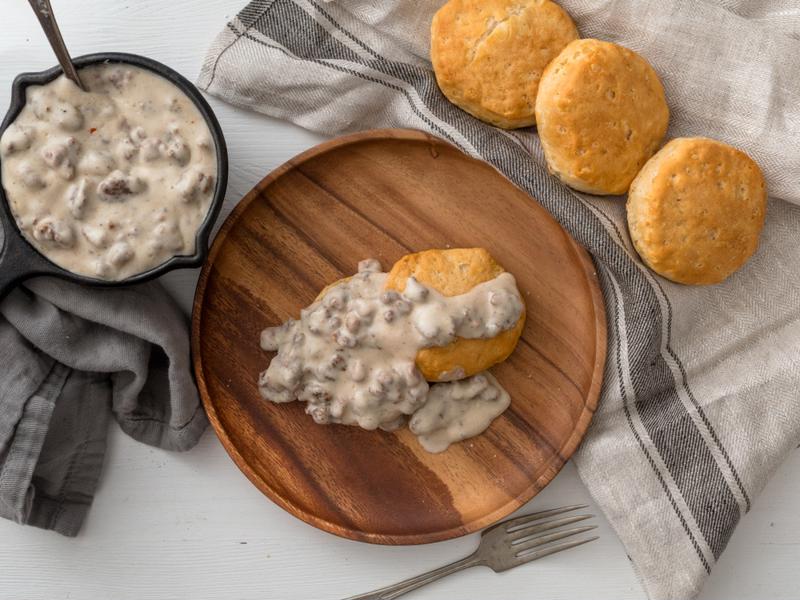No one knows for sure when and where the tradition of sausage gravy and biscuits began: It's been a staple since before the U.S. Revolutionary War. At the time, it was a hearty dish for the frugal, hard-working masses who had relatively easy access to dairy and flour, according to the Farmer's Almanac. Today, biscuits and sausage gravy is a beloved, traditional meal, particularly in the South and the Midwest.
Austin culinary students who seek to master this classic American dish will first need to create the perfect sausage gravy. To that end, we've provided a bit more background on cooking gravies along with our very own recipe for a basic but delectable sausage gravy.
Understanding deglazing
All gravy is, in essence, a type of pan sauce, and like all other pan sauces, it's success is dependent upon a process known as deglazing. This involves first cooking a certain protein or vegetable (sausage for our intents and purposes) in a pot or pan. While cooking, particles from the meat and some of the juices will inevitably be caked onto the surface of the pan or left behind in tiny chunks. These little brown deposits are often called sucs or fond, and they're crucial to preparing a good gravy. To deglaze a pan, add a liquid such as wine, water or stock over the deposits with the pan still over heat. This will cause the solution to activate and absorb the flavors. Make sure you scrape the pan as you deglaze to mix the fond with the liquid.
In many pan sauces, the meat is typically removed and set aside before the liquid or flour is added. However, this isn't mandatory for all pan sauces, and that includes gravy.

The sausage gravy recipe
That brings us to Escoffier's very own sausage gravy recipe.
Start by pan-frying a pound of ground breakfast sausage in a skillet over medium-high heat until you've cooked all the pink out of the meat. Next, incrementally add one-third of a cup of all-purpose flour. The goal is for the flour to fully absorb the grease, so it helps to sprinkle it onto the pan's surface immediately before mixing it into the sausage. Stir the flour in until it's no longer visible. Next you'll incrementally add 3 and a half cups of milk to the sausage. It's important to add it in small amounts since you might not need all of it, and because you can use it later to thin the gravy if it becomes too viscous. Whisk in the milk, and then let the gravy sit for about 10 to 15 minutes, stirring every so often just to make sure nothing burns. The gravy will thicken, so feel free to add milk if you prefer it to be slightly thinner. Finally, lightly season with salt and pepper to taste (check out the precise ingredient list and an instructional video, here).
A recipe for buttermilk biscuits
There's plenty you can do with a sausage gravy (pour it over a quiche, serve it with vegetables and potatoes, etc.) but none is quite as classic as serving it over buttermilk biscuits.
To make your biscuits, start by preheating the oven to 425 degrees. Sift together all-purpose flour (2 cups), baking powder (1 tablespoon), sugar (1 tablespoon) and salt (1 teaspoon). Next, use a cheese grater to grate one-third of a cup of frozen butter into the dry ingredients until you achieve a meal-like consistency. Slowly incorporate buttermilk (1 cup), pouring incrementally and mixing it in before adding more. Once the dough is the right consistency (not too dry, not too sticky), pull it out and kneed it for one to two minutes. Roll into a quarter-inch-thick sheet, and then cut out round biscuits with the rim of a glass. Bake for about 13 to 15 minutes, and voila: You have biscuits to eat with your sausage gravy.
Check out Escoffier's full buttermilk biscuit recipe here.

